Argentine Rodeo
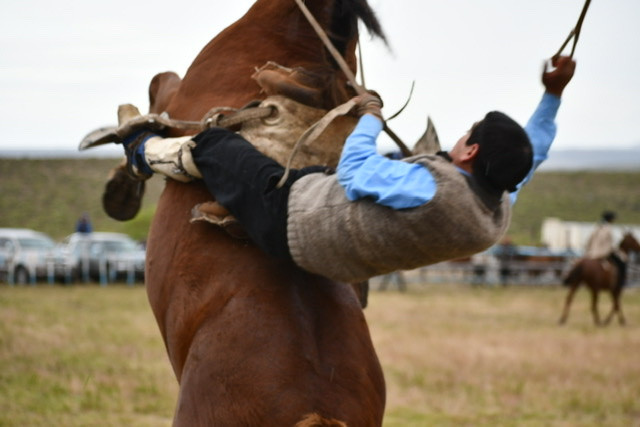
There have been very few days we’ve not seen a gaucho in Argentina. It’s always a highlight of the day to see a mounted gaucho trotting his horse in a field or on the side of the road, he & his dogs hustling sheep or cattle on their way. It’s an honored profession in this country. While proudly esteemed from within it’s own membership, it’s also a touchstone of cultural identity on a national level.
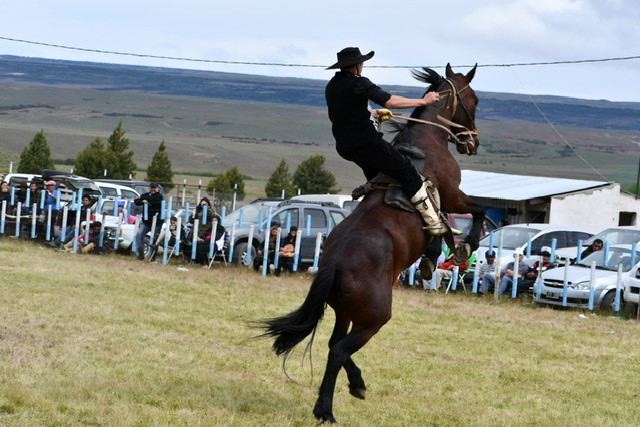
We just observed a pinnacle aspect of gaucho culture by attending an Argentine rodeo. Argentine rodeo gauchos are bad ass.

There’s no saddling the horse in a chute. It’s all done in the open, while the horse is tied to a post.
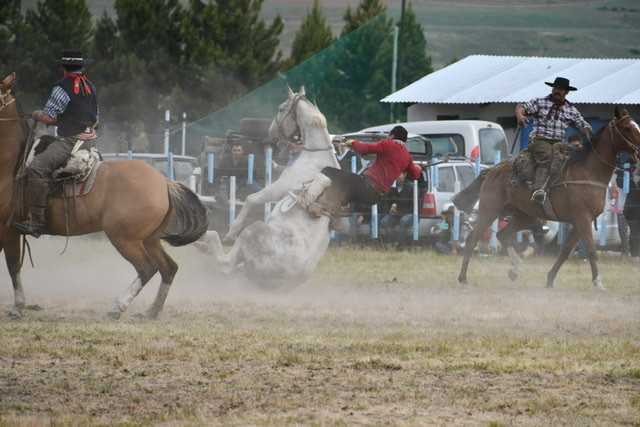
There are no hard-sole boots, helmet, gloves or other safety equipment. They’re going out to ride in soft leather boots that are more like socks, and they put their feet into open stirrups.
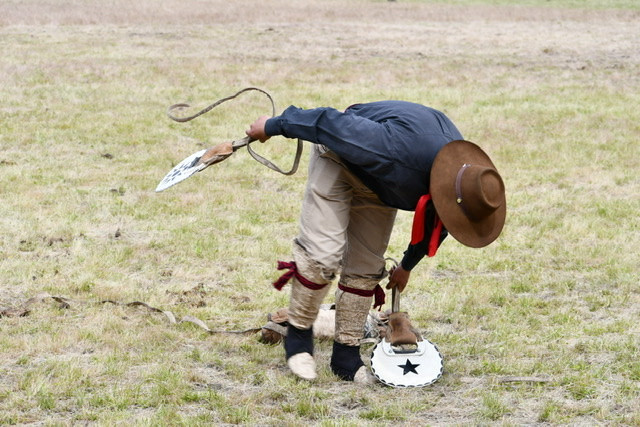
They skip blue denim and chaps in favor of light cotton pants.
They wear berets on their heads and sometimes, while the horse is bucking, the berets fly-off the gauchos head and sail like a frisbee.
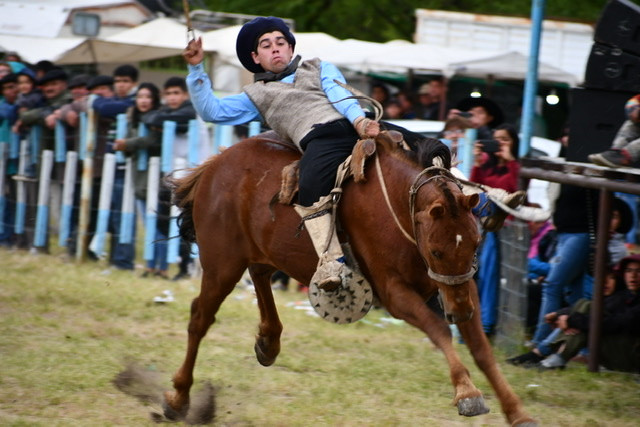
Oh, plus they have a long, articulated strop, and spurs, and are thrashing, and spurring, the horse the moment the horse is untied from the post. They keep thrashing, and spurring, until the whistle goes off at ten seconds, vs. the storied eight-second buzzer standard in the US.
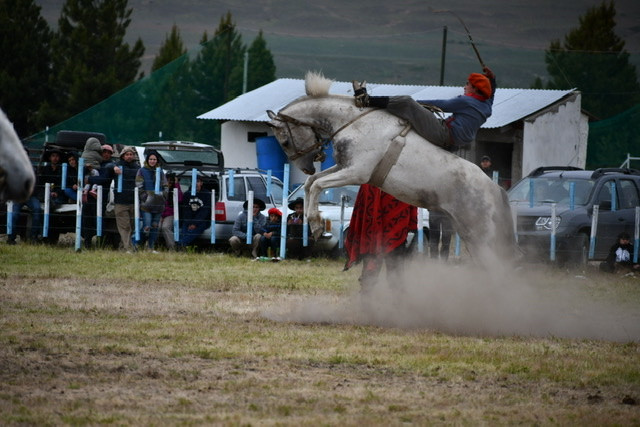
Some do this bare-back.
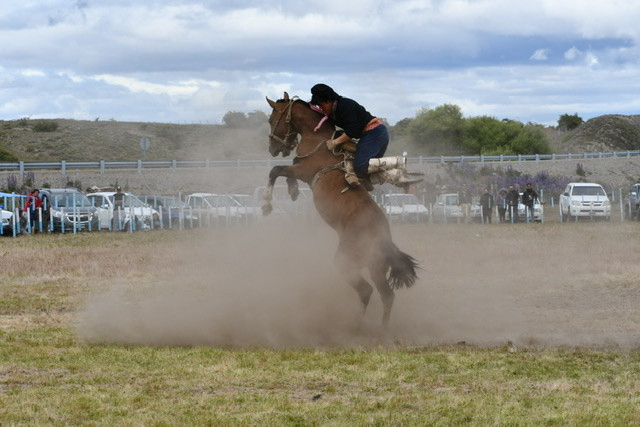
We were watching this happen, in awe, and it happened totally by chance.
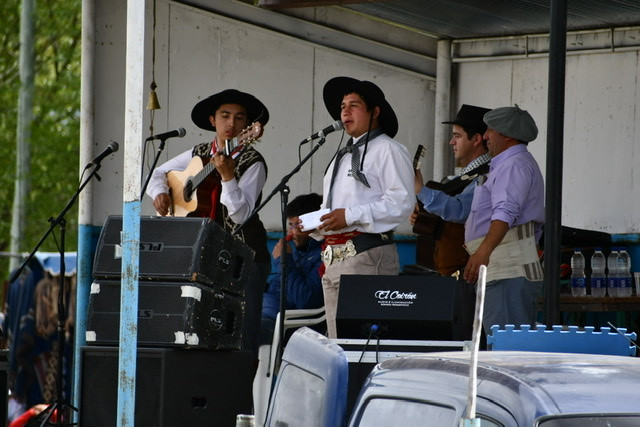
Oh, yeah; there’s a live band playing Chamame and other campo music being broadcast nonstop from a stage as all this is happening.
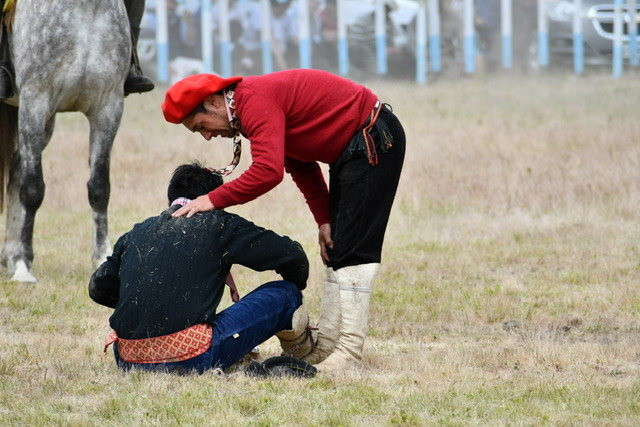
If any cowboys read this, please don’t kick my ass. I have complete respect for anyone with nuts big enough to ride a bronc or a bull. These gauchos are just playing the game without a cup to protect their nuts.
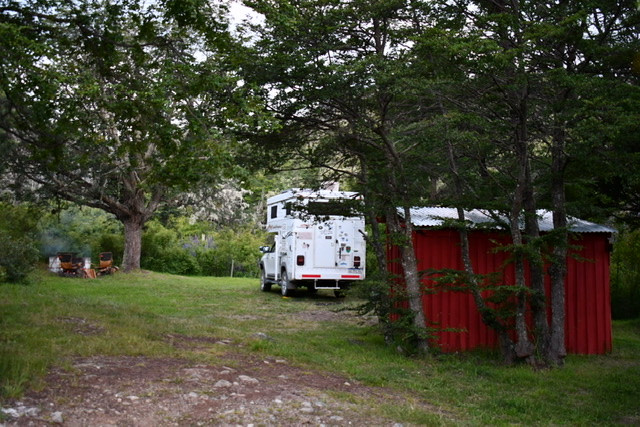
We woke up at sunrise on a lake near Rio Pico. We had a peaceful night camping in a municipal campground; owned by the city of Rio pico but 15 km out of town.
We’d been running up and down rough gravel roads, unimproved tracks and some of the most ridiculous horseback trails for the past month. We’d been fishing our asses off. We decided it was time to put the fishing rods away, put some asphalt under our tires and become tourists again. We’d made up our minds to listen to glaciers grind for Christmas and to get a good start by traveling as far as Perito Moreno that day. Several hours in the seat.
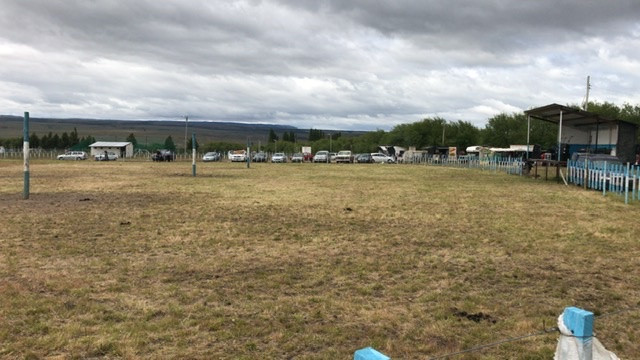
Fail. As we were pulling out of Rio Pico Lynnette was looking out the window and saw a rodeo ground, mostly empty, but with several vendors set up and selling food, gaucho dress & tack. We hesitated on the accelerator and almost kept going but decided to turn around to see what was happening.
For 200 pesos each ($2.75) we were number 19 and number 20 through the gate. We found a spot that favored the wind taking the dust away from us then we backed-in against the fence.
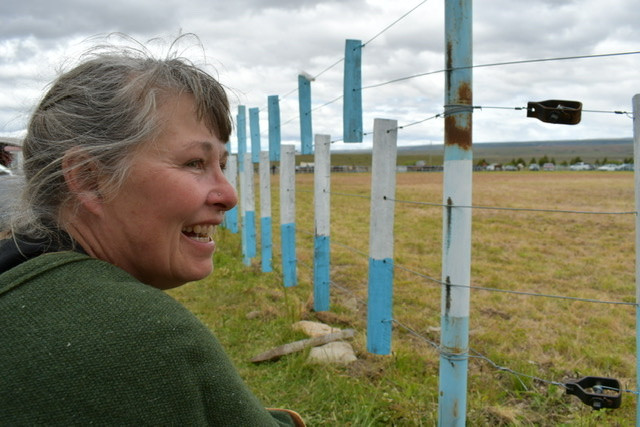
We then set up chairs and hung out for a couple hours awaiting the event to begin.

We visited the vendor stalls. It’s our tradition to take home a piece of memorabilia from every trip we take, something to hang on the wall to remind us of where we’ve been. It was here that we found our piece: a traditional gaucho belt made of Carpincho leather and silver.
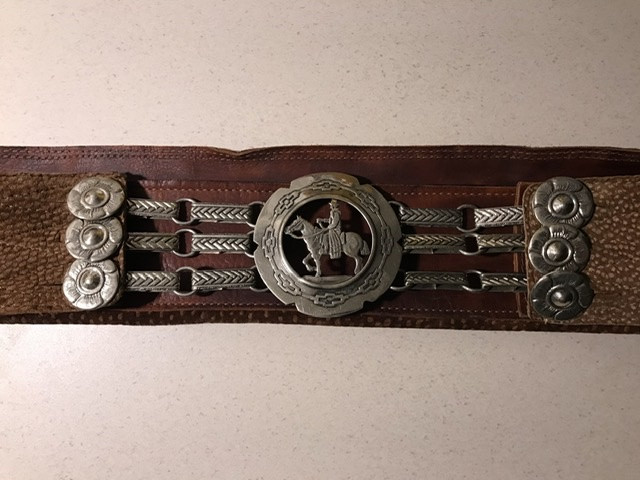
The Carpincho is the largest member of the rodent family that includes the “guinea pig” and lives in the northern provinces of Argentina. They are the size of large dogs and their leather is soft, supple and uniquely beautiful. Gauchos are historically a landless culture spare of material possessions but they proudly displayed their wealth by creating, bangles, belts, knife handles and sheaths made out of silver.
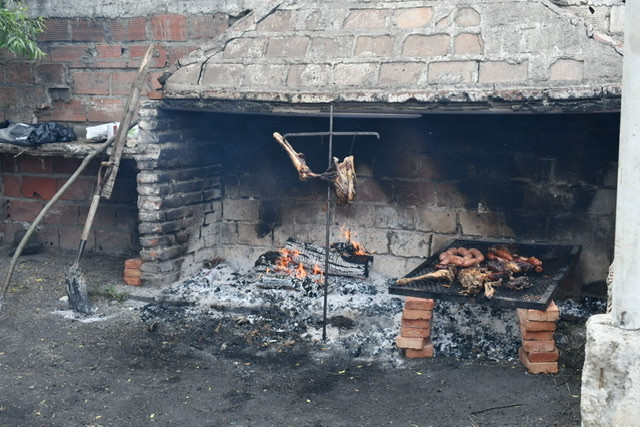
There was an asado for all. The Asador was a guy with a real characters face and a sense of humor. We saw him greet a friend with his facon (knife) extended and a growl.
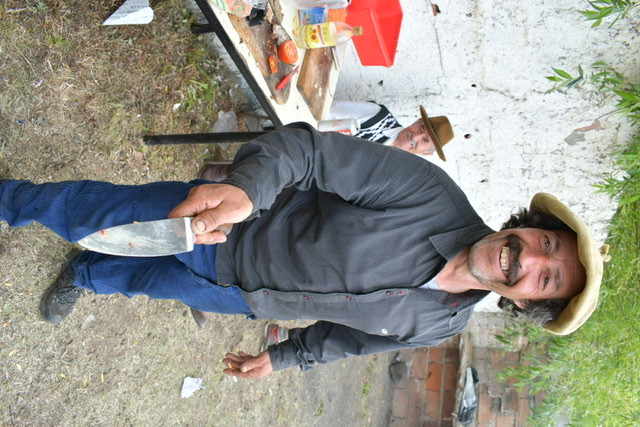
Later, I asked him to do the same for me. The effect didn’t turn out the same way. He then handed me what turned out to be a delicious sausage sandwich.
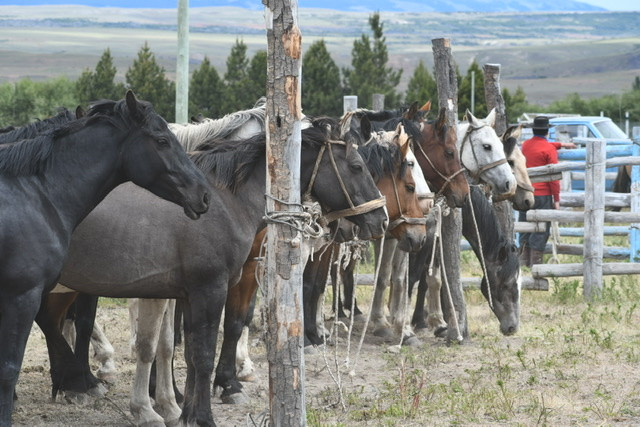
The remuda of broncos was assembled on the far end of the rodeo field and were brought out, one by one, to be tied to posts. While three posts were in the field, only two were utilized, simultaneously, as preparation points.

Some of the Broncos offered immediate and fierce resistance to being tied to the post, sometimes to the point of lying down and refusing to cooperate.

After saddling the bronco, which often took three or four people as well as the station boss (official title we did not learn) pinning the bronco with his horse to keep it still.
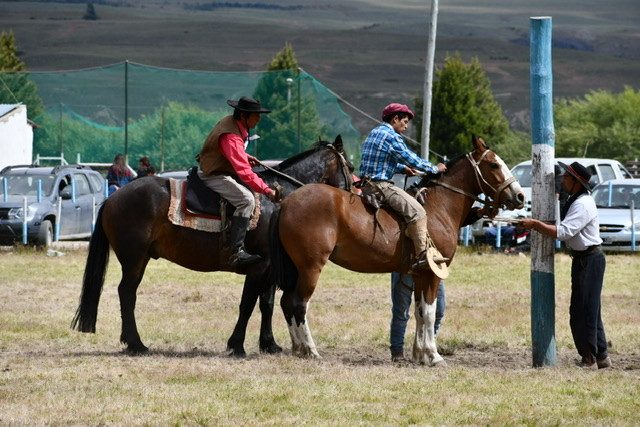
The station boss often gently rapped the bronco on its withers which seemed to settle it during the saddling process.
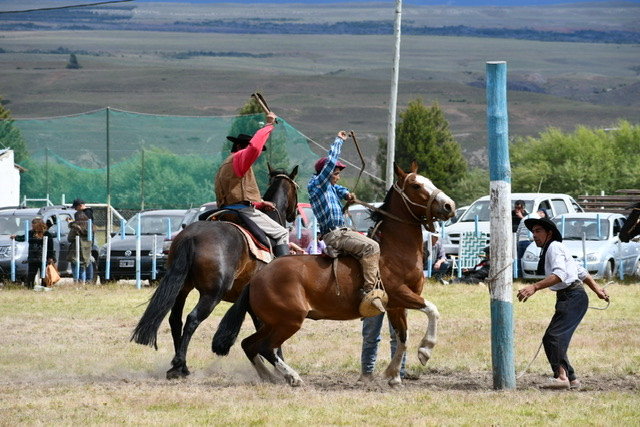
After the gaucho mounted the bronco and raised his strop, the station boss would raise his strop to signal “ready” then drop his strop indicating start of time and release of the bronco from the post.
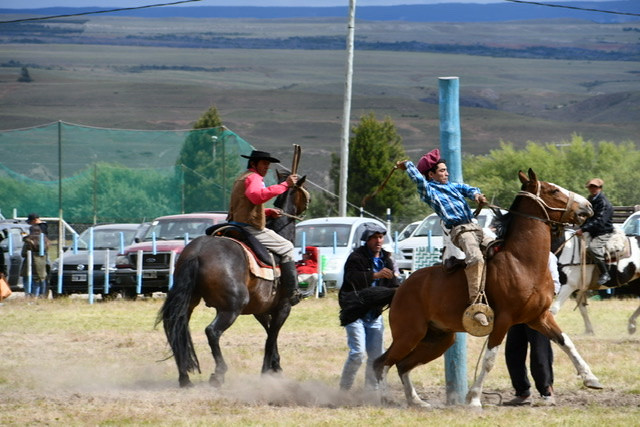
All hell would immediately break loose as the bronco began bucking and rearing, scattering the saddling attendants on foot.
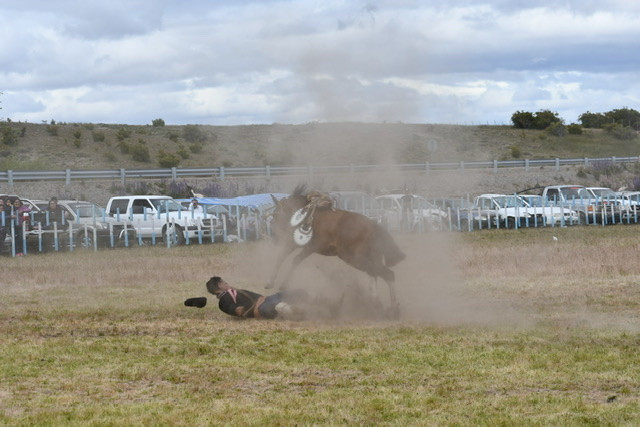
The gaucho would then begin flailing his strop and spurring the bronco. We saw a lot of thrown riders, dragged riders and the occasional horse and rider literally falling in a heap to the ground. It was a miracle nobody was hurt.
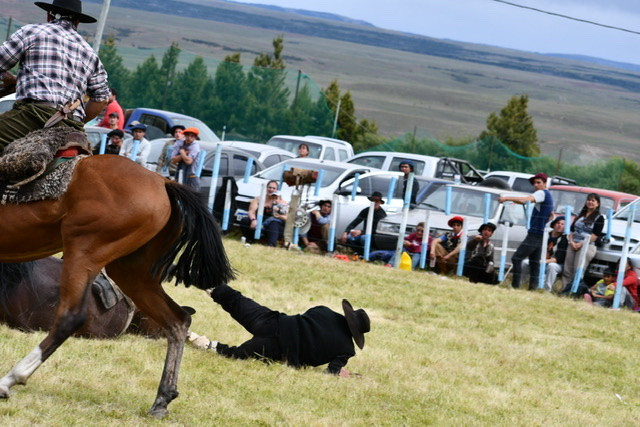
Attending riders would close in on a gaucho remaining mounted until the 10 second whistle.
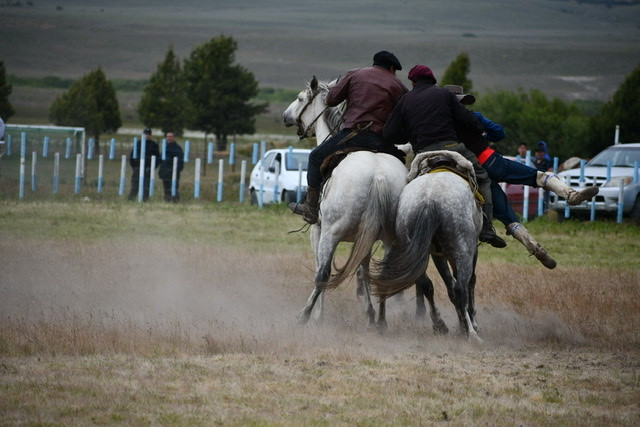
As the whistle blew they would then pin the bronco on either side with their horses then retrieve the mounted gaucho from the bronco. The skill sets at play were amazing.
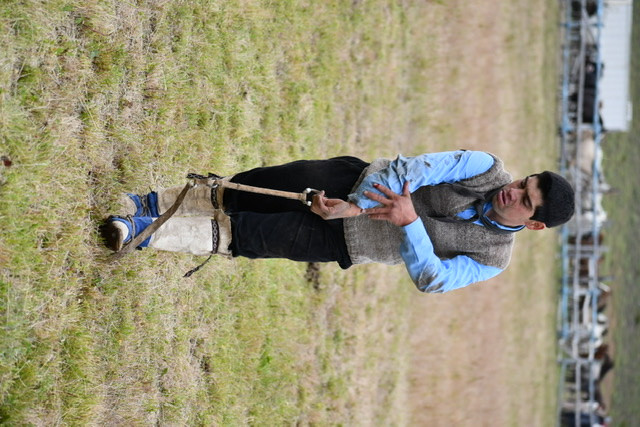
A particularly successful, wild ride or sometimes even survival from a particularly dangerous ride, were met with cheering, whistling, applause and vehicle horn-honking from the audience.
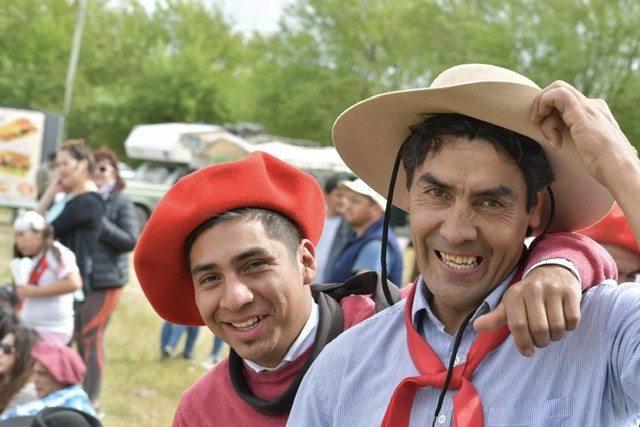
The entire event was open to us and we felt privileged to cross through fences and mingle among these amazing people.
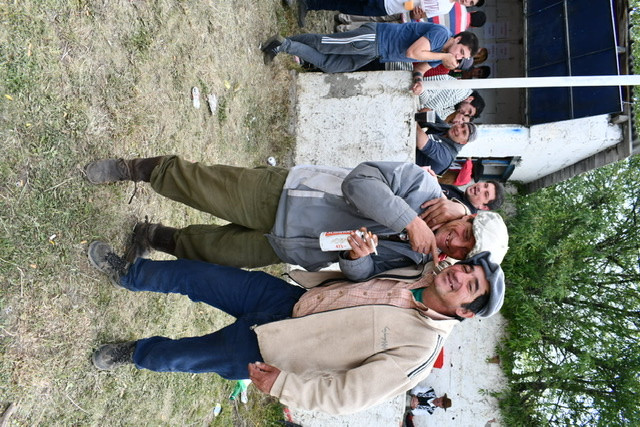
A couple drunks said “Let’s pose for a picture for the gringo!”
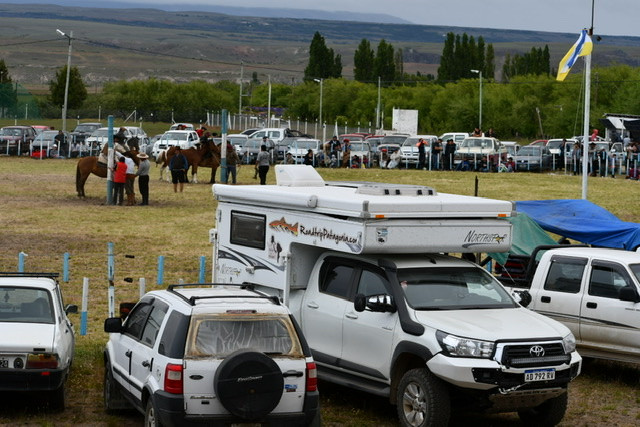
Our only regret is we couldn’t speak better Spanish as many people wished to engage us.
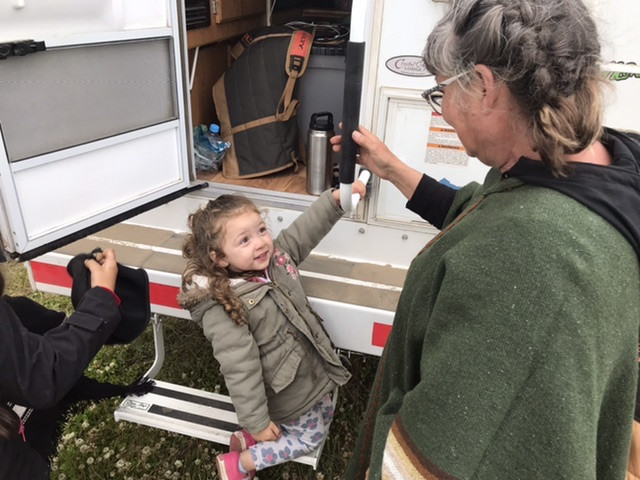
Lynnette, as usual, had children flocking to her. We had to constantly fend-off their parents who kept wanting to admonish the children for bothering us. in the end, they were all laughing along with us.
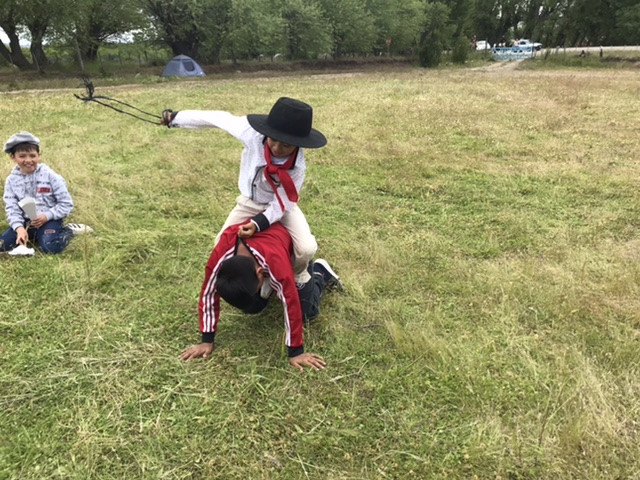
The children at the event kept themselves amused by taking turns playing gaucho and bronco.
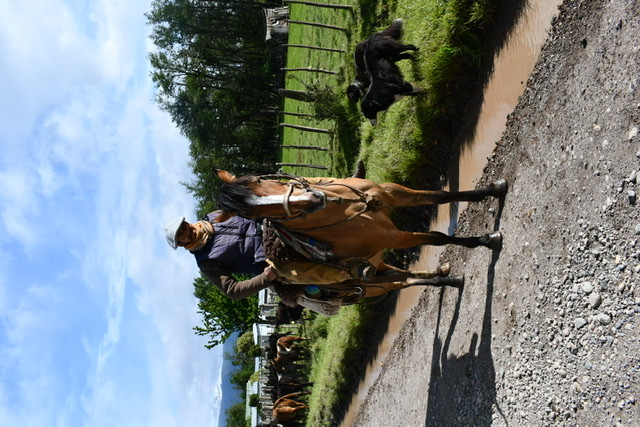
Today, when we see gauchos riding the fence lines along the lonely, windswept highways we will be waving to them with a newfound respect.
